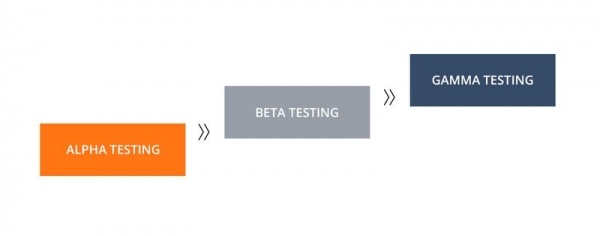Are you aware of the Automation Pyramid Model Strategy? Does it become tiring for your development team as they wait for their test suite to run? Do they continuously keep running the test suite even after the tests fail? As if running it, again and again, fixes it magically. If your developers face these problems, there’s a great chance their test suite is not according to the test automation pyramid.
Introduction To Test Automation Pyramid
The test automation pyramid is a vital concept that most software developers must know. This framework guides the dev team into generating the best-quality product. The test team brings down the time taken by developers to discover whether they have brought about any breaking change or not. It also results in a more trustworthy test suite.
This blog will discuss the test automation pyramid and introduce important strategies for handling it.
What Is Test Automation?
Before getting to know the test automation pyramid in detail, let’s know about test automation. “It is the procedure in which tests are run on their own it includes handling test data and using the results to improve the software quality. It is usually a quality assurance practice, but its activities include the dedication of the whole software production team.”
Test Automation can also decrease developers’ total time on testing, as the environment can be properly arranged and cleaned up independently. Not just that, but it can release the test run results for future insights. This would assist the developers in debugging the problems quicker. Now, let’s see where the pyramid fits.
Top 7 Ways To Improve Coverage With Test Automation Solution
What Is The Test Automation Pyramid Model Strategy?
The test automation pyramid depicts the various types of tests. It is mostly about providing the developer with immediate feedback that code changes do not spoil the previous features. The test pyramid has 3 separate parts. Unit Tests belong to the lowest level, Integration tests comprise the middle part, and End-to-end tests make up the top. The test pyramid assists the developers in delivering the best quality software.
Another common question is that why is there a need to draw a line between the varieties of tests in the codebase? Let us answer this question based on the different tiers. Here we have explained the common tools used in the various levels and tips for handling the test automation pyramid.
What Are Unit Tests?
The pyramid requires a sturdy base, and that’s where the role of the unit tests comes about. This signifies that they are the most popular test type in the test pyramid.
It focuses on testing a minor portion of the functionality in the codebase and aims to ensure that the unit behaves in a particular way in isolated situations. This might be a particular function or a class. Developers must continue testing multiple scenarios, from the happy path to error management.
The unit test suite must run fast because they are the biggest subset of tests inside our pyramid and will keep growing in numbers as new features get added. The unit test suite must be run whenever developers make some alterations in the code. This provides quick developer feedback related to the brand new code and whether it broke anything in the codebase or not. A quick unit test suite motivates developers to run the suite more frequently, which reduces the time wasted on debugging errors.
What Are Integration Tests?
Unit Tests are not sufficient to test the quality of a codebase. This is where integration tests play an important role. Integration tests constitute the middle tier of the test automation pyramid. This also signifies that integration tests shouldn’t be like unit tests. It ensures interactions with outdoor components. If we see it properly, we’ll notice that the external components might be anything existing outside your app, but your app will still be dependent on it.
Like, databases are a popular external dependency in Software Apps, so it’s integral to test that your app interacts with your database perfectly. Database integration tests must run perfectly with the actual instance of a database matching to the production environment. This needs handling the database either locally or in the build pipeline. Docker makes it easy to handle as it provides images of the common databases that include MySQL and Microsoft SQL Server.
What is the reason developers even think of unit tests if integration tests properly show the functioning of the code along with the external dependencies? As these dependencies exist outside the app, the feature we tested needs communication to the dependency. This immediately calls our database or web service, causing the integration test to run at a lesser speed than unit tests.
Difference between Unit Testing and Integration Testing
What Are End-To-End Tests?
Now, in the end, we have finally reached the highest level of the test automation pyramid. By the end of the day, we wish to confirm that our whole app is functioning normally, and that is perfectly what the end-to-end tests assist in. End-to-End Tests appear to be exactly what they sound like. These also test the proper functioning of your app from start to end. In simple words, it means that they test the front end’s integration and the back end.
If we think of end-to-end tests from the user’s perspective, we wonder how a user would interact with our app? and in what way can we write a test from the user’s point of view? Let us dive deep into one example. Our app normally has a login page, and we might want to test how it works.
This might be a time-consuming procedure for developers to test their code and modify each time. Not just that, all developers have various strategies for this kind of manual testing. How can we make this process more manageable and easily reproducible?
Selenium is a well-known testing framework that automates the process of interaction inside a browser. Selenium brings about a domain-specific language that helps developers write down tests that communicate with a web app running within the browser. We can easily write down a test with Selenium to properly copy the steps of the login procedure. This depicts that the coming together of the UI and the back-end API works well.
End-to-end tests remain at the highest level of the test automation pyramid as they are quite unhurried and delicate. Like integration tests, they can depend on the outside dependencies that are not trustworthy.
Final Thoughts
Does your dev team’s codebase have a sturdy pyramid paired with test automation? So that it can further help your team ship features quicker and with better quality? Reach out to Hikeqa to know more about our automation testing services and how to select a test automation platform fitting your dev team’s requirements. Hope you found this guide on Automation Pyramid Model Strategy useful.

















